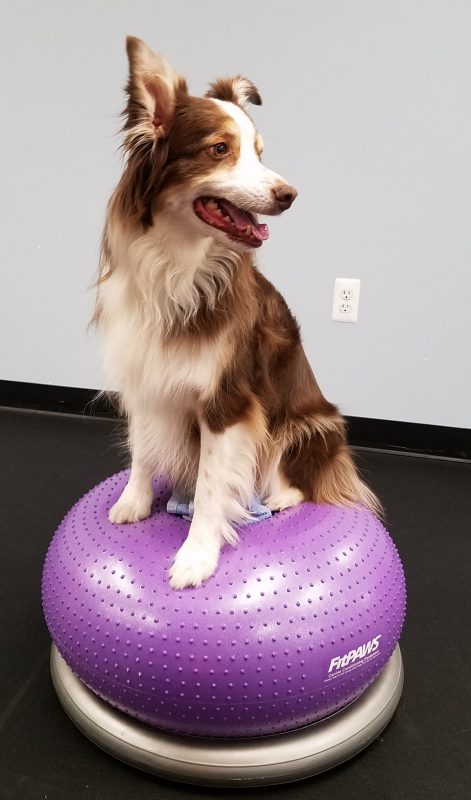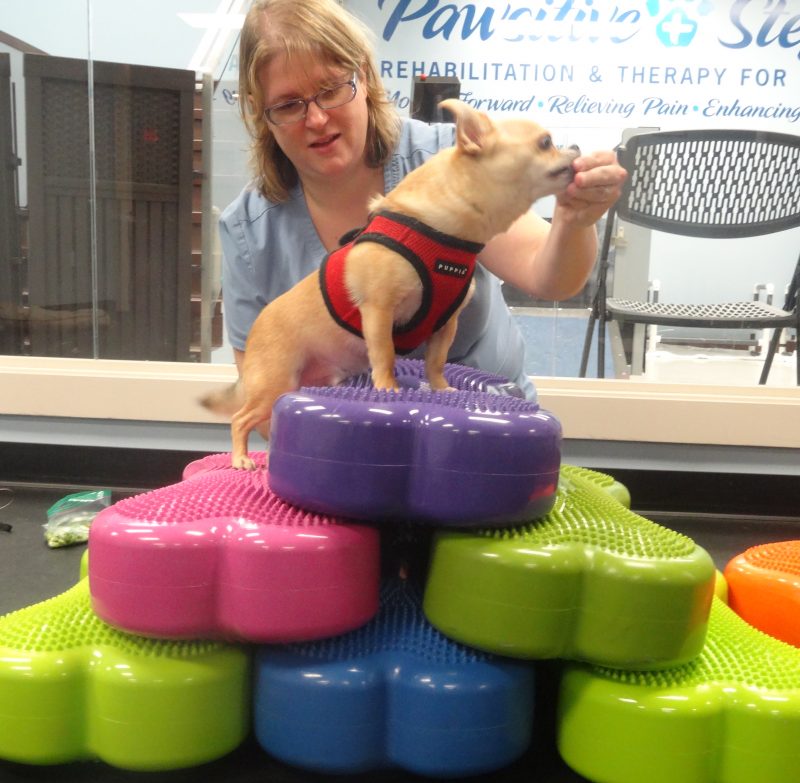The Role of Positive Training in Rehabilitation
by Cathryn Adolph, LVT
A little cookie goes a long way…
In our office, we use positive training to teach our patients new behaviors with specific form and proper posture. These behaviors are targeted at improving strength, balance, and/or proprioception (body awareness). The pet needs to pay attention to what their body is doing. We use a combination of targeting, luring, shaping, and molding using positive reinforcement.
In rehabilitation and fitness conditioning, negative or force based philosophy of dog training is avoided. When we use force, often the dog does not really “learn” or pay attention to what their body is doing and the form is frequently incorrect. A fearful pet can become difficult to work with if a technician continues to force the pet to perform an exercise. If bad enough, the pet may avoid the exercise, the people, or equipment involved all together.
Why use positive reinforcement?
Positive reinforcement is a fun and easy way to communicate with our pets. Some of the benefits include:
- Encourages the pet to keep working with a great attitude
- Giving a reward indicates a correct behavior
- Withholding a reward communicates an incorrect behavior
- While learning a difficult behavior, you can reward effort for trying
Motivation
We work-out to feel better, run a marathon, drop a dress size, or because a physical therapist instructed us to. The reward for our hard work will be a new wardrobe, a medal, or graduation from therapy. While these are great rewards for us, they are not great motivations for our pets. Rewards help motivate the pet to want to perform the exercises.
Types of Rewards
When talking about rewards, most owners assume a food reward. While we do use food & treats in our training, for some dogs, this is too exciting. For these dogs, they are so focused on the food that they cannot pay attention to what their body is doing. Alternative rewards include:
- Praise
- Petting
- Play
- Even the chance to go sniff!
Positive training in rehabilitation is the cornerstone in our ability to teach new exercises to pets. It can create behaviors with accurate and proper form. It can also motivate a pet to continue to work with us even in distracting environments.
